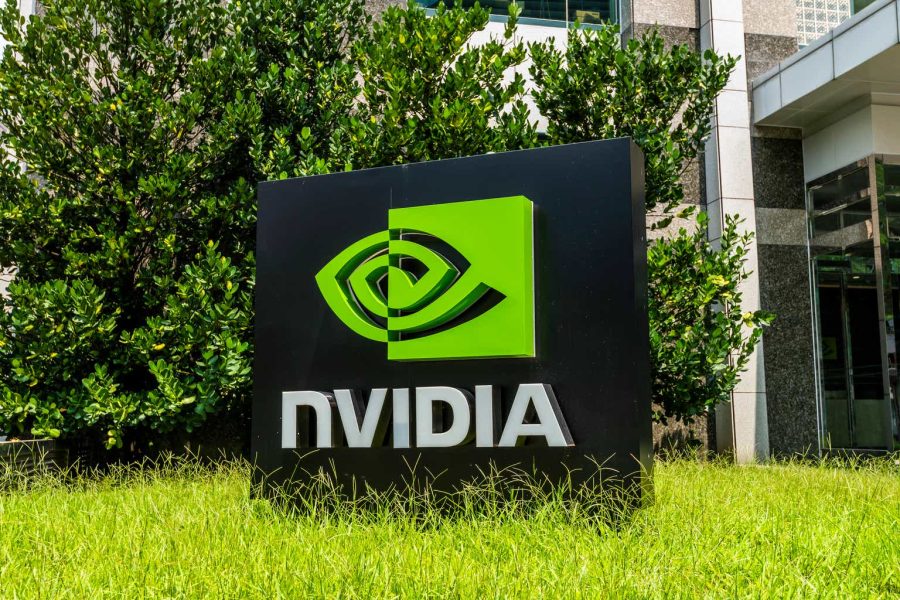July 14, 2024 This Week Top S&P 500 Gainers & Losers
Tesla: Time To Take Profits
Microsoft: The Q4 Results Should Surprise You
Tesla: Optimus And FSD Probably Won’t Save The Day
April 23, 2024 Maximizing Profits: When is the Right Time to Sell Your Business?
April 12, 2024 Improve Your Financial Status: A How-To Guide
April 12, 2024 How ZIM Integrated Container Tracking is Revolutionizing Global Trade
March 15, 2024 6 Best Growth Stocks To Buy Now According to Metatrader 5

Roku (ROKU) Stock Forecast for 2024–2028. Sell or Buy?
Updated: July 26, 2024 (20:22)
Sector: Communication servicesThe share price of Roku, Inc. (ROKU) now
50/200 Day Moving Average: $58.98 / $72.49
This figure corresponds to the Average Price over the previous 50/200 days. For Roku stocks, the 50-day moving average is the resistance level today.
For Roku stocks, the 200-day moving average is the resistance level today.
Are you interested in Roku, Inc. stocks and want to buy them, or are they already in your portfolio? If yes, then on this page you will find useful information about the dynamics of the Roku stock price in 2024, 2025, 2026, 2027, 2028. How much will one Roku share be worth in 2024 - 2028?
When should I take profit in Roku stock? When should I record a loss on Roku stock? What are analysts' forecasts for Roku stock? What is the future of Roku stock? We forecast Roku stock performance using neural networks based on historical data on Roku stocks. Also, when forecasting, technical analysis tools are used, world geopolitical and news factors are taken into account.
Roku stock prediction results are shown below and presented in the form of graphs, tables and text information, divided into time intervals. (Next month, 2024, 2025, 2026, 2027 and 2028) The final quotes of the instrument at the close of the previous trading day are a signal to adjust the forecasts for Roku shares. This happens once a day.
Historical and forecast chart of Roku stock
The chart below shows the historical price of Roku stock and a prediction chart for the next month. For convenience, prices are divided by color. Forecast prices include: Optimistic Forecast, Pessimistic Forecast, and Weighted Average Best Forecast. Detailed values for the Roku stock price can be found in the table below.
Long-term forecasts by years.

Factors Influencing Roku's Stock Forecast: What Analysts Need to Know

Roku (ROKU) has garnered significant attention from investors, but predicting its stock rates involves understanding several key factors. Here's an analysis of what events and elements are essential in forecasting ROKU’s stock performance.
Key Factors Impacting ROKU Stock Forecast
First and foremost, Roku's moderating growth rate will be crucial. As the company shifts from high growth to more moderate levels, stock multiples are likely to adjust downward. Investors tend to reward consistent growth, and any slowdown in this area could impact ROKU’s stock price prediction adversely.
Another major factor is sales and marketing efficiency. Despite substantial investments, the slow expansion of Roku's user base suggests inefficiencies. This raises questions about the effectiveness of their international strategies and the high costs of customer acquisition. Analysts will closely monitor user growth and marketing spend to predict future profitability, impacting whether they view ROKU stock as a buy or sell.
Additionally, Roku's Average Revenue Per User (ARPU) struggles in low-monetization international markets. Weak ARPU growth can limit overall revenue scalability, putting further pressure on stock forecasts.
- Growth Rate Moderation
- Sales and Marketing Efficiency
- ARPU and Monetization
- International Expansion Challenges
- Operating Profitability and Cash Flow
- Market Conditions and Consumer Spending
Furthermore, international expansion and competition pose significant risks. Late entry into global markets and fierce competition from established players threaten Roku’s long-term growth, which can negatively affect its stock price target.
Finally, operating profitability and free cash flow are crucial for sustained financial health. Analysts will consider these metrics when making ROKU stock price predictions, as consistent profitability often translates into higher stock valuations.
Considering these dynamics, analysts can predict ROKU’s stock performance more accurately by evaluating growth potential, marketing efficiency, ARPU trends, competitive positioning, and financial sustainability. Keeping an eye on macroeconomic conditions, which influence consumer spending, is also vital as it directly impacts revenue from device sales and user acquisition.
For those debating whether ROKU is a good stock to buy, these factors offer a comprehensive lens through which to assess its future potential and make informed investment decisions.
Review the original Analysis

Uncovering the Potential: A Deep Dive into ROKU's Stock Forecast

Amid the fluctuating landscape of the stock market, ROKU's stock forecast emerges as a topic of keen interest for potential investors. Key events and factors stand out for their influential role in shaping the future trajectory of ROKU stocks. Among these, the growth in streaming viewing share and lucrative advertising opportunities, alongside the uncertainty shadowing the WMT-VZIO deal, play pivotal roles. Coupled with ROKU's attractive valuations compared to its peers, these elements provide a fertile ground for making informed stock price predictions.
Deciphering the Catalysts for Change
Analysts drilling down into Roku's stock forecast recognize the importance of its expanding streaming market share, now at 1.5%, and the bolstering effect of advertising revenue on its financial health. The intrigue surrounding the WMT-VZIO deal introduces a layer of uncertainty, potentially affecting partnerships and competitiveness. However, ROKU's robust user base, significantly surpassing that of VZIO, positions it well in this evolving narrative.
Evaluating these factors, analysts can navigate through the murky waters of stock market predictions with a clearer vision. Focusing on ROKU's robust growth in streaming and advertising realms, the significant impact of market dynamics posed by potential industry deals, and leveraging ROKU's comparatively attractive valuation metrics, can aid in making the most accurate ROKU stock price predictions. Is ROKU a good stock to buy, sell, or hold? Given the forecasted trajectory and underpinned by a solid foundation of growth and financial strategy, ROKU's stock emerges as an enticing prospect for those looking to invest in streaming's booming future.
- Streaming viewing share & advertising opportunities
- Uncertainty around the WMT-VZIO deal
- Attractive valuations compared to peers
As the landscape shifts, keeping an eye on these critical factors will guide investors looking to make a savvy ROKU stock buy or sell decision. With the ROKU stock price prediction showing promising directions, the question isn't just if it's a worthy investment, but how to optimize investment timing for the best returns.
Review the original Analysis

Roku's Stock Forecast: Adapt or Sink in the Streaming Sea

When peering into the future of ROKU stocks, key events and factors paint a picture poised for analysis. At the heart of the matter, growing market share, expansive ad platform ambitions, and valuation multiples emerge as the beacon influencers. Roku's escalating dominance in TV usage, marked by a surge in streaming hours and ad-supported content consumption, suggests an upward trajectory in demand for its platform. This enthusiasm for Roku's offerings is a critical lever, potentially driving the ROKU stock forecast into more bullish territory.
Ad Platform Expansion: The Game Changer
Additionally, Roku's concerted effort to widen the tentacles of its ad platform stands as a pivotal chapter in its growth saga. By welcoming a broader spectrum of advertisers and threading partnerships like the one with leading DSP Trade Desk, Roku is sculpting a fertile landscape for ad demand and spending upticks. Analysts keen on crafting an accurate ROKU stock price prediction would do well to track these developments closely. Such strategic moves can not only redefine revenue streams but also significantly influence the ROKU stock price target.
Lastly, the lens of valuation multiples cannot be overlooked. With Roku trading at appealingly low forward sales multiples, a window of revaluation beckons. This aspect offers a nuanced opportunity for forecasting; understanding the interplay of growth prospects and market share gains with current valuation can aid analysts in delineating whether ROKU is a good stock to buy or sell. As the streaming giant maneuvers through market dynamics, the question of 'buy or sell Roku stock' hinges on keen observation of these critical factors.
Thus, set against a dynamic backdrop, Roku's road ahead is laden with pivotal shifts that dictate its stock fate. For those invested in the Roku stock forecast, keeping a pulse on these influencing factors could mean navigating through the fog with a clearer vision, making the difference between mere speculation and informed prediction.
Review the original Analysis
Roku, Inc. designs and manufactures consumer electronic products. The company offers wireless devices that stream audio and video from the internet to home entertainment devices.
Roku daily forecast for a month
| Date | Target | Pes. | Opt. | Vol., % |
|---|---|---|---|---|
| Jul 28 | 59.71 | 58.28 | 60.79 | 4.30 |
| Jul 29 | 58.22 | 57.37 | 59.41 | 3.55 |
| Jul 30 | 56.91 | 55.94 | 57.85 | 3.41 |
| Jul 31 | 55.34 | 54.24 | 57.39 | 5.82 |
| Aug 01 | 54.57 | 53.75 | 55.30 | 2.89 |
| Aug 02 | 56.94 | 56.26 | 58.19 | 3.44 |
| Aug 03 | 57.25 | 56.00 | 59.49 | 6.24 |
| Aug 04 | 58.49 | 57.29 | 60.71 | 5.97 |
| Aug 05 | 59.54 | 57.66 | 60.28 | 4.54 |
| Aug 06 | 58.41 | 56.77 | 59.81 | 5.35 |
| Aug 07 | 55.60 | 53.91 | 56.58 | 4.95 |
| Aug 08 | 57.36 | 56.06 | 59.22 | 5.63 |
| Aug 09 | 59.74 | 58.63 | 61.50 | 4.89 |
| Aug 10 | 60.75 | 58.38 | 62.76 | 7.49 |
| Aug 11 | 62.06 | 60.94 | 63.73 | 4.58 |
| Aug 12 | 63.17 | 61.59 | 65.61 | 6.51 |
| Aug 13 | 63.33 | 61.56 | 64.85 | 5.35 |
| Aug 14 | 63.24 | 61.28 | 64.63 | 5.47 |
| Aug 15 | 60.58 | 59.31 | 62.49 | 5.36 |
| Aug 16 | 59.52 | 58.48 | 60.21 | 2.95 |
| Aug 17 | 59.61 | 57.76 | 61.28 | 6.09 |
| Aug 18 | 59.10 | 56.98 | 61.05 | 7.16 |
| Aug 19 | 58.42 | 56.12 | 60.70 | 8.17 |
| Aug 20 | 59.36 | 58.26 | 60.49 | 3.82 |
| Aug 21 | 60.52 | 58.88 | 62.85 | 6.73 |
| Aug 22 | 62.69 | 61.28 | 64.76 | 5.68 |
| Aug 23 | 60.06 | 59.31 | 61.05 | 2.94 |
| Aug 24 | 57.33 | 55.78 | 59.48 | 6.63 |
| Aug 25 | 57.07 | 55.27 | 58.95 | 6.66 |
| Aug 26 | 55.07 | 53.12 | 57.11 | 7.52 |
Roku Daily Price Targets
Roku Stock Forecast 07-28-2024.
Forecast target price for 07-28-2024: $59.71.
Positive dynamics for Roku shares will prevail with possible volatility of 4.126%.
Pessimistic target level: 58.28
Optimistic target level: 60.79
Roku Stock Forecast 07-29-2024.
Forecast target price for 07-29-2024: $58.22.
Negative dynamics for Roku shares will prevail with possible volatility of 3.430%.
Pessimistic target level: 57.37
Optimistic target level: 59.41
Roku Stock Forecast 07-30-2024.
Forecast target price for 07-30-2024: $56.91.
Negative dynamics for Roku shares will prevail with possible volatility of 3.296%.
Pessimistic target level: 55.94
Optimistic target level: 57.85
Roku Stock Forecast 07-31-2024.
Forecast target price for 07-31-2024: $55.34.
Negative dynamics for Roku shares will prevail with possible volatility of 5.497%.
Pessimistic target level: 54.24
Optimistic target level: 57.39
Roku Stock Forecast 08-01-2024.
Forecast target price for 08-01-2024: $54.57.
Negative dynamics for Roku shares will prevail with possible volatility of 2.812%.
Pessimistic target level: 53.75
Optimistic target level: 55.30
Roku Stock Forecast 08-02-2024.
Forecast target price for 08-02-2024: $56.94.
Positive dynamics for Roku shares will prevail with possible volatility of 3.327%.
Pessimistic target level: 56.26
Optimistic target level: 58.19
ROKU (ROKU) Monthly Stock Prediction for 2024
| Month | Target | Pes. | Opt. | Vol., % |
|---|---|---|---|---|
| Aug. | 58.48 | 53.43 | 60.59 | 11.81 |
| Sep. | 60.52 | 54.93 | 63.21 | 13.10 |
| Oct. | 58.63 | 53.42 | 60.25 | 11.33 |
| Nov. | 58.00 | 56.40 | 60.64 | 7.00 |
| Dec. | 57.23 | 53.46 | 60.60 | 11.79 |
Roku forecast for this year
Roku Stock Prediction for Aug 2024
An uptrend is forecast for this month with an optimal target price of $58.4841. Pessimistic: $53.43. Optimistic: $60.59
Roku Stock Prediction for Sep 2024
An uptrend is forecast for this month with an optimal target price of $60.5193. Pessimistic: $54.93. Optimistic: $63.21
Roku Stock Prediction for Oct 2024
An downtrend is forecast for this month with an optimal target price of $58.6311. Pessimistic: $53.42. Optimistic: $60.25
Roku Stock Prediction for Nov 2024
An downtrend is forecast for this month with an optimal target price of $57.9979. Pessimistic: $56.40. Optimistic: $60.64
Roku Stock Prediction for Dec 2024
An downtrend is forecast for this month with an optimal target price of $57.2324. Pessimistic: $53.46. Optimistic: $60.60
Roku (ROKU) Monthly Stock Prediction for 2025
| Month | Target | Pes. | Opt. | Vol., % |
|---|---|---|---|---|
| Jan | 61.70 | 59.77 | 65.25 | 8.40 |
| Feb | 59.77 | 56.76 | 64.72 | 12.30 |
| Mar | 56.83 | 53.22 | 61.74 | 13.81 |
| Apr | 53.83 | 49.11 | 57.51 | 14.60 |
| May | 48.79 | 46.86 | 50.78 | 7.72 |
| Jun | 50.61 | 48.97 | 54.13 | 9.54 |
| Jul | 50.61 | 47.75 | 54.25 | 11.98 |
| Aug | 47.63 | 44.49 | 50.77 | 12.38 |
| Sep | 50.83 | 46.93 | 52.66 | 10.89 |
| Oct | 56.69 | 53.83 | 61.45 | 12.40 |
| Nov | 61.86 | 60.37 | 66.16 | 8.75 |
| Dec | 65.49 | 62.35 | 70.60 | 11.69 |
Roku (ROKU) Monthly Stock Prediction for 2026
| Month | Target | Pes. | Opt. | Vol., % |
|---|---|---|---|---|
| Jan | 67.46 | 62.60 | 69.97 | 10.53 |
| Feb | 74.18 | 67.77 | 80.68 | 16.00 |
| Mar | 76.94 | 71.86 | 83.95 | 14.41 |
| Apr | 72.69 | 69.38 | 76.97 | 9.86 |
| May | 73.21 | 70.05 | 75.06 | 6.67 |
| Jun | 71.37 | 69.14 | 74.11 | 6.70 |
| Jul | 77.11 | 70.82 | 82.38 | 14.04 |
| Aug | 76.55 | 73.15 | 79.68 | 8.19 |
| Sep | 74.81 | 72.92 | 77.77 | 6.23 |
| Oct | 79.74 | 72.38 | 83.67 | 13.50 |
| Nov | 77.93 | 74.93 | 80.82 | 7.29 |
| Dec | 72.97 | 67.98 | 76.12 | 10.70 |
Roku (ROKU) Monthly Stock Prediction for 2027
| Month | Target | Pes. | Opt. | Vol., % |
|---|---|---|---|---|
| Jan | 68.24 | 62.26 | 71.03 | 12.34 |
| Feb | 66.28 | 62.14 | 69.06 | 10.02 |
| Mar | 73.51 | 67.34 | 76.87 | 12.39 |
| Apr | 72.19 | 68.64 | 76.35 | 10.10 |
| May | 79.03 | 72.58 | 85.96 | 15.56 |
| Jun | 79.60 | 75.40 | 85.72 | 12.04 |
| Jul | 75.97 | 73.24 | 78.98 | 7.27 |
| Aug | 82.81 | 80.33 | 90.56 | 11.30 |
| Sep | 82.91 | 80.32 | 86.99 | 7.66 |
| Oct | 80.82 | 73.06 | 87.03 | 16.05 |
| Nov | 72.38 | 66.56 | 75.25 | 11.54 |
| Dec | 69.17 | 66.60 | 74.15 | 10.19 |
Roku (ROKU) Monthly Stock Prediction for 2028
| Month | Target | Pes. | Opt. | Vol., % |
|---|---|---|---|---|
| Jan | 72.82 | 66.53 | 78.76 | 15.53 |
| Feb | 73.35 | 66.83 | 78.10 | 14.43 |
| Mar | 81.88 | 78.44 | 88.96 | 11.82 |
| Apr | 84.63 | 81.89 | 87.07 | 5.95 |
| May | 87.17 | 81.94 | 91.88 | 10.82 |
| Jun | 94.39 | 87.82 | 103.11 | 14.83 |
| Jul | 95.41 | 91.29 | 101.02 | 9.63 |
| Aug | 96.90 | 92.83 | 102.36 | 9.31 |
| Sep | 91.90 | 84.51 | 98.52 | 14.22 |
| Oct | 99.95 | 94.31 | 108.59 | 13.14 |
| Nov | 90.47 | 83.09 | 93.08 | 10.73 |
| Dec | 89.61 | 87.46 | 97.24 | 10.06 |
Roku information and performance
150 WINCHESTER CIRCLE, LOS GATOS, CA, US
Market capitalization of the Roku, Inc. is the total market value of all issued shares of a company. It is calculated by the formula multiplying the number of ROKU shares in the company outstanding by the market price of one share.
EBITDA of Roku is earnings before interest, income tax and depreciation of assets.
P/E ratio (price to earnings) - shows the ratio between the price of a share and the company's profit
Price/earnings to growth
Dividend Per Share is a financial indicator equal to the ratio of the company's net profit available for distribution to the annual average of ordinary shares.
Dividend yield is a ratio that shows how much a company pays in dividends each year at the stock price.
EPS shows how much of the net profit is accounted for by the common share.
Trailing P/E depends on what has already been done. It uses the current share price and divides it by the total earnings per share for the last 12 months.
Forward P/E uses projections of future earnings instead of final numbers.
Enterprise Value (EV) /Revenue
The EV / EBITDA ratio shows the ratio of the cost (EV) to its profit before tax, interest and amortization (EBITDA).
Number of issued ordinary shares
Number of freely tradable shares
Shares Short Prior Month - the number of shares in short positions in the last month.


















































